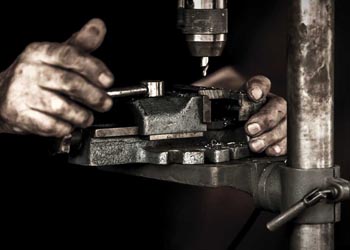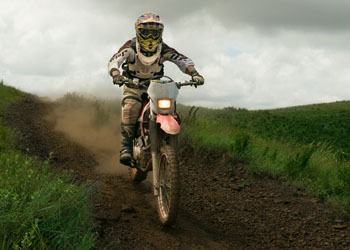Rehabilitation
The #1 Solution for Your Condition!
Have you been diagnosed with one of the conditions listed below and followed your doctors recommendations but are still suffering with pain, loss of hand and arm strength and the inability to do do all the things before your condition?
Then this is your chance to finally eliminate the symptoms associated with your RSI and get back to doing the things you used to do, but WITH enhanced grip-strength and no more pain! FLEXTEND®-RESTORE™ is 100% guaranteed or your money back.
Carpal Tunnel Syndrome
- Sharp pain or general ache on the front side of the hands /wrists.
- Tingling, numbness or paresthesia (Pins & needles) affecting the thumb, index, middle and sometimes one-half of the ring finger.
- Feeling the “NEED / DESIRE” to stretch the hands all the time.
- Loss of coordination and control.
In most cases, CTS results from a muscle imbalance caused from the overuse of the finger /wrist flexor muscles and the finger adductor muscles in specific unidirectional movement patterns, (Gripping, squeezing, typing, etc.) These activities create a muscle imbalance that cause the carpal tunnel to become too narrow and pinch the flexor tendons and median nerve within. Once they begin operating (moving back and forth) in such a small space, the tendons and nerves become irritated and inflamed due to the increased amount of friction.
The irritated, inflamed nerve is a secondary response to the fact that the weak finger/wrist extensor muscles, are not holding the carpal tunnel open so there is enough room or the flexor tendons and median nerve to move normally.
Once the weak muscles are strengthened (finger/ wrist extensors, finger abductors, interosseous and lumbricals are strengthened) the carpal “tunnel” expands outward to the point where enough ligamentous pressure is applied to the carpal bones where they meet their end range-of-motion (EROM). Once this point is reached with all eight carpal bones due to the expansive pressure, the carpal tunnel has reached a level of stability and the symptoms simply disappear because the carpal tunnel / canal is finally OPEN!
DeQuervain's Syndrome
The Symptoms of DeQuervain’s Syndrome include:
- Sharp, stabbing pain in the muscle belly of the thenar eminence or an overall general ache at The insertion point of the extensor pollicis brevis.
- And/or general ache at the base of the thumb MP joint / CMC joint
- Pain along the back/medial side of the thumb.
DeQuervain’s is most often caused by repetitive and/or static flexion of the thumb resulting from overuse, direct injury / trauma and certain inflammatory conditions, such as gout , rheumatoid arthritis and diabetes can activate the disorder. Both workplace and recreational activities may cause DeQuervain’s Syndrome and it affects women 8-10 times more often than men.
FLEXTEND® – RESTORE™ exercises correct DeQuervain’s Syndrome by increasing the length of the short, restricted adductor and flexor tendons of the thumb, and by increase the strength and stability of the weak abductor and extensor tendons of the thumb. Addressing the muscle / joint imbalance greatly reduces the pain and dysfunction of Dequervain’s Syndrome by reducing laxity in the joint and restoring stability, range of motion, endurance and strength to the affected joint.
Golfers Elbow
- Pain directly on the medial epicondyle of the elbow joint, located on the inside of the elbow, either at the tenoperiosteal junction where the tendon attaches to the bone, or at the musculotendinous junction where muscle and tendon attach together 1-2 inches below the elbow joint on the medial side when the hand is in the palm-up position.
- Weakness and pain on the inside of the elbow when the hand/wrist is flexed against resistance
- Pain on the inside of the elbow when trying to flex/bend the fingers against resistance.
- Painresulting in weakness when gripping an object (i.e. Shaking hands).
Golfer’s Elbow is most often caused by direct or repeated or forced overstretching of the flexor muscles, causing microtears, irritation and inflammation to the soft tissues. These microtears arise because the flexor muscles are extremely tight and restrictive from constant overuse, and if forced into hyperextension or “overstretched”, the tendons give out at their weakest point, which are the musculotendinous junction and the tenoperiosteal junction.
When treating Golfer’s Elbow, it is important to create overall muscle balance and stability around the entire joint by relaxing tight restrictive segments of the flexor muscles, but also strengthening other weak, injured segments of the same flexor group. Treating this disorder is a bit tricky as the goal is to achieve two different things for the same muscle group.
This is where FLEXTEND® – RESTORE™ comes in, as it helps increase the length and mobility of the flexor muscles, but also strengthen the weak, damaged segments of the same muscle group. It also works to shorten/strengthen the extensor muscles, providing complete stability around both the wrist and elbow joints. The gentle stretching and strengthening exercises allowed with the use of FLEXTEND® – RESTORE™ can help you get back to doing these things you want, and without pain!
Guyon's Tunnel
- Pain, dysfuction and lack of coordination and control.
- Numbness, tingling and paresthesia (pins and needles) affecting one-half of the ring finger and the pinkie finger.
- Weakness in the ring and pinkie may be present along with pain on the ulnar side of the wrist (ulnocarpal joint).
Guyon’s Syndrome is generally caused by impingement of the ulnar nerve on the pinkie-side of the wrist joint as it passes through the guyon’s Canal / Tunnel, due to the strong, short, overused, compressive flexor, pronator and ulnar deviator muscles of the wrist.
FLEXTEND® helps reduce compression of the ulnar nerve at the wrist junction by stretching the overly tight, compressive flexor, pronator and ulnar deviators of the wrist by strengthening the extensors, supinators and radial deviators of the wrist.
Repetitive Strain Injury
Repetitive Strain Injury symptoms include:
The symptoms of Repetitive Strain Injury of the wrist include tightness, discomfort, stiffness, general ache and/or stabbing pain on the backsides of the hands and forearms along with the feeling of needing to massage and/or stretch the hands, wrists and forearms.
These symptoms are a result of the weak finger and wrist extensor muscles attempting to counteract the tensile strain imposed by the strong, tight flexor muscles in order to maintain the carpal and metacarpal bones in their proper positions.
FLEXTEND® – RESTORE™ can help eliminate symptoms by correcting the existing muscle imbalance and improving the power, strength, endurance of extensor muscles at the origin and insertion points, reducing pain and spasm in the backsides of hands, wrists and forearms.
Thoracic Outlet Syndrome
Thoracic Outlet Syndrome symptoms include:
The symptoms of Thoracic Outlet Syndrome include pain, numbness, tingling and paresthesia (pins and needles) in the thumb, index, middle, ring and pinkie fingers as well as the entire hand. Symptoms may be presented in the forearms and upper arms as well.
Thoracic Outlet Syndrome results from the compression of the Brachial Plexus that lies between the upper pectoral muscles and the clavicle (collar bone). This compression occurs due to the overly tight restrictive pectoral muscles, specifically the pec minor and upper division of the pec major) and anterior shoulder muscles squeezing down on Brachial Plexus while the anterior scalene muscles lift up the first and second ribs, impinging the Brachial Plexus. The Brachial Plexus resembles a phone cable carrying several lines, which include the median, ulnar and radial nerves.
The FLEXTEND® – RESTORE™ with AC-KIT helps to reduce symptoms of Thoracic Outlet Syndrome by stretching and lengthening the overly tight, restrictive deltoid and pectoral muscles, thereby reducing compression of the Brachial Plexus. It also simultaneously strengthens the antagonist muscles in order to help maintain the length created from stretching the pectoral and anterior deltoid muscles.
Trigger Thumb
One of the most common symptoms associated with Trigger Thumb is the “snapping” or “locking” of the PIP joint of the thumb, and second, the “snapping” or “locking” of the MP joint of the thumb into the palm of the hand. This most common symptom is experienced due to an adhesion or nodule that has developed on the thumb flexor tendon, most often resulting from scar tissue that has developed due to micro tears of the tendon.
Trigger Thumb, or stenosing tenosynovitis, can result from micro-tears by either direct trauma or chronic overuse. The flexor pollicis longus tendon develops nodules / adhesions on it, which leads to increased friction as the tendon passes through the pulley system, resulting in the irritation and swelling of the tendon, its sheath and the associated nodules on the tendon. This irritation / inflammation cycle increases the size of the nodules or adhesions, causing the dysfunction to greatly increase as the thumb is flexed over and over.
Essentially, the nodule or adhesion on the affected tendon in the thumb gets trapped as it passes through the pulley system as the thumb is flexed but the thumb cannot return via extension in the same smooth manner due to the adhesion or nodule getting stuck or “catching” as it tries to pass back through the pulley system. Because of this, the thumb tends to lock down into the palm of the hand as well as produces painful catching or clicking that is commonly associated with Trigger Thumb.
Performing corrective exercises with FLEXTEND® / RESTORE™ can reduce scar tissue on the tendon as well as help stretch and thin the tendon, allowing it to move freely through the pulley system. This training system is very simple and effective therapy, taking just minutes per day.
Cubital Tunnel Syndrome
- Pain and discomfort on the medial (inside) posterior portion of the elbow where the ulnar nerve travels through the Cubital tunnel.
- Pain directly in the elbow joint especially during extension or “locking-out” phase of the joint motion;
- Numbness, tingling and paresthesia (pins and needles) affecting one-half of the ring finger and the entire little finger.
The Cause of the symptoms result from the impingement of the ulnar nerve within the Cubital tunnel on the medial side (Inside) of the elbow, being compressed by the tight flexor and pronator muscles within and around the upper portion of the forearm/elbow.
This compression is result of a muscle imbalance that occurs at a joint, the joint itself is then also subjected to the “imbalance” due to so much pressure on the “strong” side of the joint, which then causes an actual; “joint imbalance” to occur, leading to further damage to the underlying cartilage. This is so often the case when people end up “developing” osteoarthritis.
Many doctors sell osteoarthritis to their patients as “age driven”, which certainly can influence its development, but the real cause begins years earlier with overuse / misuse, muscle imbalance, joint imbalance, unequal joint pressure and development of osteoarthritis on the “strong” side of the joint.
The solution to best eliminate the symptoms caused by the muscle imbalance include the FLEXTEND exercises to help reduce compression of the ulnar nerve at the elbow junction by stretching the overly tight, compressive flexor and pronator muscles in the upper forearm, and by strengthening the supinator and extensor muscles of the forearm to eliminate misalignment of the elbow joint and compression of the ulnar nerve.
Dupuytren's Contracture
- Tightening of the Palmaris Longus fascia on the palm of the hand where it attaches to the base MP joints of the fingers.
- The fingers curl downward into the palm of the hand.
- Dupuytren’s severely depletes the functional capacity of the fingers / hand which results in pain.
- May lead to complete loss of functional use of the hand.
Dupuytren’s Contracture is a thickening and shrinking of the layer of fascia just beneath the underlying skin layer of the palm that ends up pulling on the connective tissue on the palm of the hand and at the MP joints at the base of the fingers. This disorder can cause the formation of lumps or dimples in the skin of the palm due to the tightening of the fascia, causing the fingers to bend downward/inward into a flexed position at the MP, PIP and/or DIP joints. Note: Dupuytren’s is often confused with Trigger Finger but involves a different process.
This compression is result of a muscle imbalance that occurs at a joint, the joint itself is then also subjected to the “imbalance” due to so much pressure on the “strong” side of the joint, which then causes an actual; “joint imbalance” to occur, leading to further damage to the underlying cartilage. This is so often the case when people end up “developing” osteoarthritis.
FLEXTEND® – RESTORE™ helps reduce the continued degradation of the condition, and severity of the symptoms associate with Dupuytren’s Contracture, by stretching and lengthening the overly tight, restrictive fascia, providing myofascial release which reduces the adhesions within the fascia and the underlying muscles in the palm of the hand.
FLEXTEND®-RESTORE™ stretches the restricted tissues, but also simultaneously strengthens the antagonist muscles which helps maintain the length created from stretching the fascia and underlying muscles that cover the palm of the hand. Th stronger the cunterbalance is to keep the fingers/hand from curling inward, the slower the progression of the condition.
Grip Strength
Most people think that if they are experiencing a weak grip then they must need to strengthen the flexor muscles that “close” the hands, so they purchase gripping devices and squeeze balls…but to no avail, instead often suffering increased weakness and the onset of pain. But the thought that if your grip is weak then you would need to increase strength by performing more and heavier gripping exercises does make sense. Certainly if the muscle group is weak, it needs to be strengthened, right? Not exactly.
Overuse of the finger flexors and finger adductor muscles in unidirectional movement patterns, (Gripping, squeezing, typing, etc.) actually create a muscle imbalance by making the flexors/adductors short and tight, causing them to always be in a state of being semi-contracted. Since segments of the flexor muscles are always in a state of contraction, they are pre-fatigued which eliminates their endurance and the semi-contracted (short) muscle segments are so short that they cannot shorten anymore. And it is the muscle’s ability to shorten as much as possible that provides the actual strength. I know, this sounds really confusing.
Try and picture this: If you have a muscle that is 10″ long and when contracted shortens to the length of 8″, it does not have the strength of a muscle that is 10″ long, but can shorten to 6″ long. The reason for this is that the first muscle only moved 2″ while the second muscle could move 4″. The further a muscle can move, the greater its strength and endurance levels are.
The key to increasing grip strength levels is to stretch the short, tight, semi-contracted flexor muscles that “close” the hands and exercise and strengthen the extensor muscles that “open” the hands. The stretches elongate the short tight flexor muscles and help release the muscle segments that are in a perpetual state of contraction. Following these stretches with pure extension exercises also helps to release the semi-contracted state of the flexor muscles through a process known as Reciprocal Inhibition, which works on concept that when one muscle group contracts its antagonist has to relax, thus releasing the semi-contracted muscle segments.
You can still exercise the muscles that “close” the hands, but not until they are of adequate length and the muscle balance between the flexor and extensor muscles is corrected. Once this occurs, your grip-strength levels will increase substantially, often 25-50 lbs. in just 6-8 weeks using the FLEXTEND® – RESTORE™!
Radial Tunnel Syndrome
- Pain in the top of the forearm
- Pain while shaking hands, etc
- However, RTS is distinguished from Tennis Elbow in that people afflicted with the symptoms of RTS experience numbness, tingling and paresthesia in the backs of the thumb, index and middle fingers. It is most noticeable at the nail bed of the fingers.
In addition, there are three manual tests that can indicate RTS:
- Tenderness when palpating the radial tunnel anterior to the neck of the radius
- Reproduction of symptoms with resisted supination
- Resisted extension of the middle finger
Tennis Elbow
The most common symptoms of Lateral Epicondylitis, also known as Tennis Elbow, include sharp, stabbing pain or general ache directly on the lateral epicondyle located on the outside of the elbow or 1-2 inches below of it on the tendon where muscle and tendon attach together. These symptoms most often present themselves when grasping an object, like when shaking hands,or extending the elbow.
Tennis Elbow is most often caused by weak extensor muscles put under unusual stress or normal, healthy extensor muscles subjected to sudden trauma or repetitive overuse. A direct injury or repeated trauma to a tendon/muscle can cause inflammation and a decrease in its active use, which leads to muscle atrophy, and greater possibility of re-injuring that tendon/muscle structure when activities are resumed.
The FLEXTEND® / Restore training system helps to improve the strength, flexibility and endurance of the extensor muscles at the musculotendinous and tenoperiosteal junctions which are the most susceptible areas of injury. Increasing the strength of the extensor muscles is highly critical for the successful treatment of Tennis Elbow, as well as the prevention of re-injury.
Trigger Finger
Trigger Finger symptoms include:
The most common symptom associated with Trigger Finger is a “snapping” or “locking of the finger or thumb into the palm of the hand. These sensations are experienced due to an adhesion or nodule that has developed on the tendon, most often resulting from scar tissue that has developed due to micro tears of the tendon.
The nodule / adhesion generally passes through the pulley system (tendon sheath) as the finger or thumb is flexed, but as it tries to pass through the pulley system via extension, it becomes stuck. In more severe cases, the finger has to be manually pulled back into the extended or straight position.
In many instances, Trigger finger is caused by repetitive or forceful flexion of the fingers or thumb, a result of repeated trauma from power tools or long hours grasping a steering wheel or other objects. Other contributing factors include medical conditions that cause changes in tissues, such as rheumatoid arthritis, gout or diabetes.
Performing corrective exercises with FLEXTEND® / RESTORE™ can reduce scar tissue on the tendon as well as help stretch and thin the tendon, allowing it to move freely through the pulley system. This training system is very simple and effective therapy, taking just minutes per day.
Instructions & Manuals
FLEXTEND-RESTORE™ EXERCISE IMAGES / DRAWINGS
Shows individual exercise images, to ensure proper positioning and technique.
FLEXTEND-RESTORE™ EXERCISE REFERENCE GUIDE
Describes how each exercise affects specific muscles.
FLEXTEND-RESTORE™ EXERCISE REFERENCE GUIDE
Describes how each exercise affects specific muscles.
FLEXTEND-RESTORE™ EXERCISE IMAGES / DRAWINGS
Shows individual exercise images, to ensure proper positioning and technique.
FLEXTEND-RESTORE™ EXERCISE IMAGES / DRAWINGS
Shows individual exercise images, to ensure proper positioning and technique.
FLEXTEND-RESTORE™ EXERCISE REFERENCE GUIDE
Describes how each exercise affects specific muscles.











